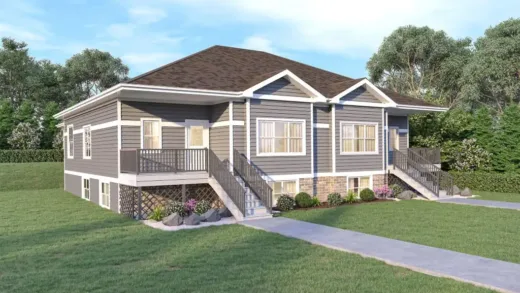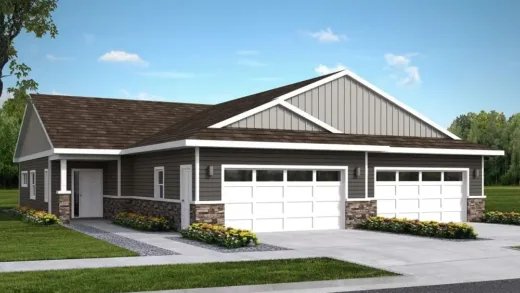The condo market in Dane County has experienced dynamic changes influenced by a range of factors including economic conditions, seasonal trends, development projects, and evolving buyer and seller behaviors.
Table of Contents
- Year-by-Year Market Analysis
- Impact of Economic Factors on the Condo Market
- Seasonal Trends in Condo Sales
- Impact of Development Projects on Market Trends
- Buyer and Seller Behavior Trends
- Conclusion
Year-by-Year Market Analysis
2014
In 2014, the Dane County condominium market began to recover from the lingering effects of the 2008 financial crisis. The market saw a modest 2% increase in median prices as consumer confidence started to return. Key factors included stabilizing employment rates and a slow but steady economic recovery. This period marked the beginning of a more balanced market with an equal mix of buyers and sellers.
2015
The year 2015 experienced stronger growth, with a 4% increase in median condo prices. Improved economic conditions and low-interest rates contributed to higher buyer demand. The market also benefited from a surge in new condominium developments, particularly in downtown Madison, attracting young professionals and retirees.
2016
In 2016, the condo market in Dane County continued to gain momentum. Median prices rose by 5%, reflecting robust demand driven by a healthy job market and low unemployment rates. The introduction of several new luxury condo projects in desirable neighborhoods further boosted market activity. Inventory levels remained relatively low, keeping competition among buyers high.
2017
The upward trend persisted in 2017, with a 6% increase in median condo prices. Low-interest rates and strong economic performance were significant factors. The market saw increased interest from out-of-state buyers, particularly those moving from larger cities seeking more affordable housing options. This influx contributed to the growing demand and higher prices.
2018
In 2018, the market showed continued strength with a 5% increase in median prices. The local economy remained robust, and unemployment rates were at historic lows. The condo market was particularly active in urban areas, with a significant number of new listings and quick sales. However, the inventory shortage started to become more pronounced, putting upward pressure on prices.
2019
The year 2019 saw a slight deceleration in growth, with a 3% increase in median prices. The market began to show signs of stabilization, with a more balanced supply and demand dynamic. Economic indicators remained positive, but the rapid price increases of previous years led to affordability concerns among some buyers. Developers responded by focusing on more mid-range and affordable condo projects.
2020
2020 was a year of unprecedented challenges due to the COVID-19 pandemic. The initial impact included a sharp slowdown in the market as lockdowns and economic uncertainty took hold. However, the latter half of the year saw a strong rebound, driven by low-interest rates and a shift towards remote work. Buyers sought condos with more space and amenities suitable for home offices. By year-end, median prices had increased by 2%.
2021
In 2021, the Dane County condo market experienced a significant surge, with a 7% increase in median prices. The market was characterized by intense buyer competition and limited inventory. Low mortgage rates and high demand, particularly from buyers moving from larger metropolitan areas, drove up prices. The trend towards remote work continued to influence buyer preferences, with increased demand for larger condos and those with outdoor spaces.
2022
The year 2022 saw a slight cooling in the market, with a 1.5% increase in median prices. Rising interest rates and growing inflation started to affect buyer affordability. The market began to show signs of balancing, with more listings becoming available and a slower pace of price increases. Buyers became more cautious, and sellers adjusted their expectations accordingly.
2023
By 2023, the market had largely stabilized. Median prices increased by just 1%, reflecting the impact of higher interest rates and a more balanced supply-demand dynamic. The economic recovery continued, but at a slower pace. Buyers focused on affordability and value, leading to longer listing times and more negotiations. The market conditions became more favorable for buyers, with less intense competition and more options available.
Impact of Economic Factors on the Condo Market
Interest Rates
Interest rates play a crucial role in shaping the condominium market. Low mortgage rates generally boost demand as borrowing becomes more affordable, leading to higher property prices. Conversely, rising interest rates can dampen demand, as higher borrowing costs reduce affordability.
Employment Rates
The employment rate is another critical factor. A strong job market boosts consumer confidence and purchasing power, driving up demand for condos. In Dane County, the consistently low unemployment rate over the past few years has supported steady demand in the condominium market.
Inflation
Inflation affects both buyers and sellers. For buyers, rising inflation can erode purchasing power, making it more challenging to afford a home. For sellers, inflation can lead to higher construction and maintenance costs, which may be passed on to buyers through higher prices. In recent years, inflation has contributed to the overall rise in condo prices in Dane County.
National Economic Trends
National economic trends, including GDP growth, federal monetary policy, and consumer sentiment, also influence the local condo market. For example, the economic stimulus measures during the COVID-19 pandemic helped sustain the real estate market by boosting consumer spending and maintaining low interest rates.
Seasonal Trends in Condo Sales
Winter
The winter months typically see a slowdown in condo sales in Dane County. Harsh weather conditions and the holiday season contribute to reduced market activity. However, this period can be advantageous for buyers, as sellers may be more motivated to close deals, potentially leading to better bargains.
Spring
Spring is traditionally the most active season for the real estate market, including condos. Warmer weather and the end of the school year drive an increase in listings and buyer activity. This period often sees the highest prices and quickest sales as demand peaks.
Summer
The summer months continue to be busy for the condo market, although the pace may slow slightly from the spring rush. Families looking to move before the new school year and favorable weather conditions keep the market vibrant. However, competition can be fierce, and prices remain high.
Fall
Fall is a transitional period in the condo market. While activity remains strong, it typically starts to taper off as the weather cools and the school year begins. Prices may begin to stabilize, and buyers who missed out in the spring and summer rush may find more opportunities.
Impact of Development Projects on Market Trends
Major Development Projects
Several significant development projects in Dane County have influenced the condo market. These projects often bring new housing units, commercial spaces, and amenities, making certain areas more attractive to buyers.
Downtown Madison Revitalization
The revitalization of downtown Madison has been a major driver of the condo market. New mixed-use developments have increased the availability of high-end condos, attracting professionals and retirees seeking urban living with modern amenities.
Suburban Growth
Suburban areas around Dane County have seen substantial growth, with new developments offering more affordable condo options compared to the city center. This trend has attracted young families and first-time homebuyers looking for value without sacrificing proximity to urban amenities.
Infrastructure Improvements
Improvements in transportation infrastructure, such as new highways and public transit options, have enhanced connectivity across Dane County. These improvements make previously less accessible areas more attractive, driving demand for condos in these regions.
Influence on Market Dynamics
Development projects often lead to increased property values in the surrounding areas due to improved amenities and infrastructure. They can also shift
buyer preferences towards newly developed neighborhoods, impacting demand and price trends across the county.
Buyer and Seller Behavior Trends
Buyer Preferences
In recent years, buyer preferences in Dane County have evolved, influenced by changing lifestyles and economic conditions.
Space and Amenities
Post-pandemic, buyers increasingly prioritize space and amenities. Condos with home offices, outdoor spaces, and modern conveniences are in high demand. This trend reflects the growing importance of remote work and a desire for a balanced lifestyle.
Location
While downtown areas remain popular, there is a noticeable shift towards suburban and exurban areas, driven by affordability and a desire for more space. Proximity to good schools, parks, and shopping centers continues to be a major factor in buyer decisions.
Sustainability
Sustainability is becoming a significant consideration for many buyers. Energy-efficient buildings, eco-friendly materials, and access to public transportation are increasingly sought after, reflecting broader societal trends towards environmental consciousness.
Seller Strategies
Sellers in the Dane County condo market are adapting their strategies to align with changing market conditions and buyer preferences.
Pricing
Accurate pricing is crucial in a balanced market. Sellers are increasingly relying on detailed market analyses to set competitive prices. Overpricing can lead to prolonged listings, while competitive pricing can attract multiple offers and quick sales.
Staging and Marketing
Professional staging and high-quality photography have become standard practices to make condos more appealing. Additionally, online marketing through social media and real estate platforms is essential to reach a broader audience.
Flexibility
Flexibility in negotiations has become more important. Sellers are more open to contingencies, such as extended closing periods or minor repairs, to attract and secure buyers. This approach is particularly relevant in a market where buyers have more choices.
Conclusion
The condominium market in Dane County has experienced dynamic changes influenced by a range of factors including economic conditions, seasonal trends, development projects, and evolving buyer and seller behaviors. Over the past decade, the market has shown resilience and adaptability, responding to both local and national economic shifts, the impacts of major development projects, and changing consumer preferences. As the market continues to evolve, understanding these trends will be crucial for both buyers and sellers aiming to navigate the complexities of the Dane County condo market effectively.









